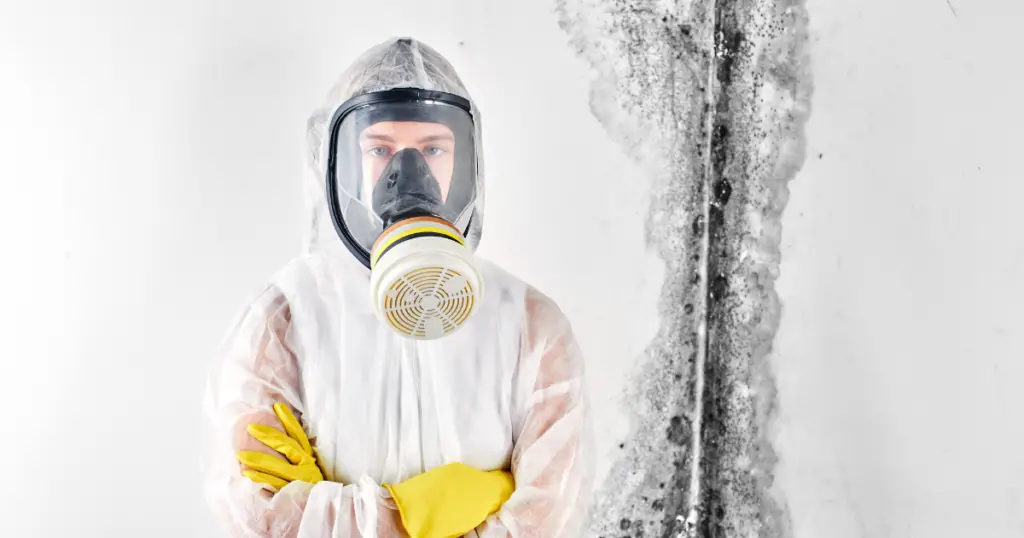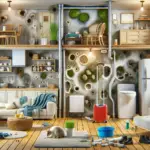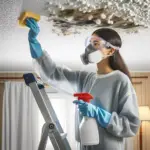[et_pb_section fb_built=”1″ admin_label=”Blog” _builder_version=”4.18.0″ _module_preset=”default” background_color=”#F9F6F5″ custom_padding=”||||false|false” collapsed=”on” global_colors_info=”{}” theme_builder_area=”post_content”][et_pb_row _builder_version=”4.20.2″ _module_preset=”default” custom_padding=”||||false|false” global_colors_info=”{}” theme_builder_area=”post_content”][et_pb_column type=”4_4″ _builder_version=”4.17.4″ _module_preset=”default” global_colors_info=”{}” theme_builder_area=”post_content”][et_pb_text _builder_version=”4.21.0″ _module_preset=”default” header_2_text_color=”gcid-c6518ae1-29db-4f1f-99d4-4111b62b7e61″ hover_enabled=”0″ global_colors_info=”{%22gcid-c6518ae1-29db-4f1f-99d4-4111b62b7e61%22:%91%22header_2_text_color%22%93}” theme_builder_area=”post_content” sticky_enabled=”0″]
Signs that there is beginning mold on walls
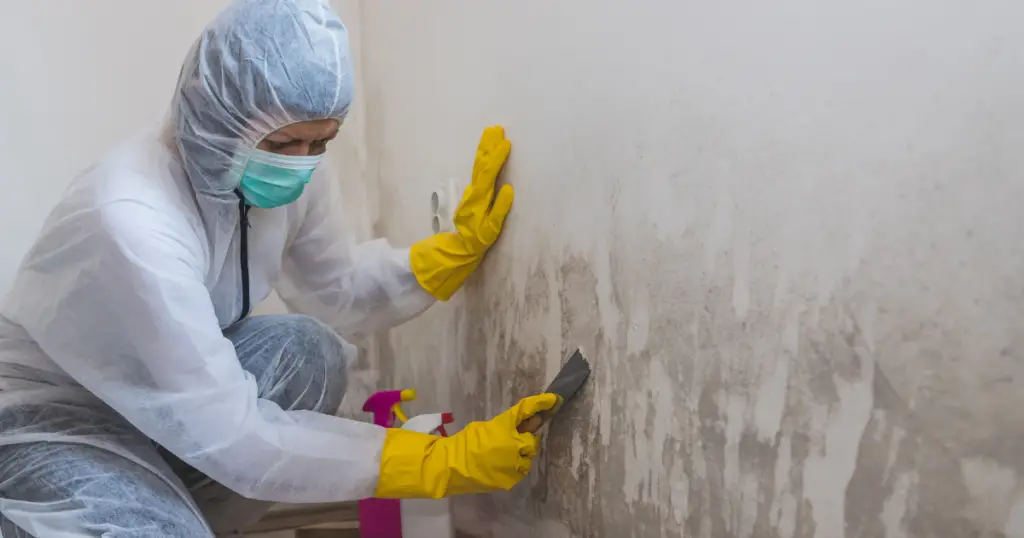
Mold growth has many signs. You may notice dark spots in the corners of your walls, discoloration, or an odor. These are all signs that mold is beginning to form, and something needs to be done about it.
Mold Spores are Everywhere
Mold spores are everywhere, and when there is moisture in the air, they can attach themselves to walls. Mold spores can even be found in operating rooms showing how pervasive they are.
Mold Reproduces Rapidly when growing.
Mold reproduces rapidly when it is growing. It produces tiny spores, lightweight particles easily dispersed through the air. When the spores land on a suitable surface, they can germinate and expand into new mold colonies. Mold multiplies and can spread quickly, especially in damp or humid environments.
The Importance of Addressing mold growth early
There are several reasons why it is essential to address mold growth as soon as it is detected:
- Mold can spread quickly: Mold grows and spreads quickly, especially in damp or humid environments. If you don’t address the problem early, it can spread to other areas of your home and cause extensive damage.
- Mold can cause health problems: Mold can cause various health problems, including respiratory issues, allergies, and asthma attacks. It is hazardous for people with compromised immune systems, such as young children, elderly individuals, and people with underlying health conditions.
- Mold can damage your home: In addition to causing health problems, mold can also damage the structure of your home. It can weaken walls, ceilings, and other surfaces and cause rot and decay.
- Mold can be costly to remove: The longer you wait to address a mold problem, the more extensive the problem is likely to become. This can lead to higher costs for mold remediation and repairs.
By addressing mold growth early, you can minimize the risks of health problems, damage to your home, and costly repairs.
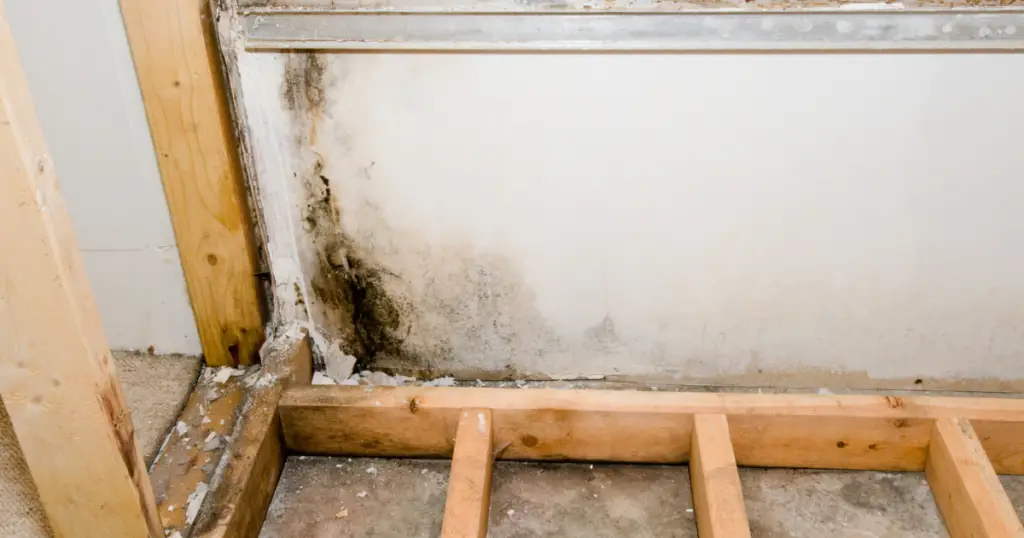
Is Mold inside walls Dangerous?
Mold inside walls can be dangerous if it is not addressed. Even if mold is hidden doesn’t mean it isn’t dangerous. Mold inside walls can be more hazardous than visible mold because it is out of sight and can go undetected for long periods. Inside your walls, you will also have electrical cables, insulation, venting, and plumbing that can be damaged by mold. There are also wall studs that you cannot directly access. And many interior walls have intersections with other walls that you cannot access directly, such as closet walls.
The causes of mold Growth on Walls
Mold can multiply and spread rapidly when the conditions are favorable for growth. Mold spores are present in most environments, but they require moisture, warmth, and organic material to thrive. When these factors come together, mold can form colonies on walls and other surfaces within days. If left unchecked, it can cause severe damage to your home and health problems for you and your family. It is essential to address any signs of mold growth early to minimize the risks associated with it.
High Humidity
Mold thrives in high humidity levels, which are often above 50%. As the humidity level rises, so does the likelihood of mold growth. In ideal conditions, mold can begin to grow in as little as 24 hours after water damage occurs. Perfect conditions for mold growth include a relative humidity of over 60% and temperatures between 68 and 86 degrees Fahrenheit.
Leaks or water damage
Mold loves moisture and dark, damp areas. If you have any water damage or leaks in your home, it can create the perfect environment for mold to grow. Common sources of water damage include leaking pipes, faulty plumbing, and roof leaks.
Poor ventilation
Proper ventilation keeps air moving and helps reduce the humidity in your home. Without adequate ventilation, moisture can build up quickly and provide an ideal environment for mold growth. Make sure that your home has proper airflow by opening windows, installing exhaust fans, or using a dehumidifier as needed.
How to identify mold
Mold can be difficult to identify, especially if it is hidden inside your walls. Some common signs of a mold problem that you can look for include discoloration or staining on the walls, musty smells, and visible mold patches.
Different Mold Appearances
Mold can appear in different colors, shapes, and forms. Common types of mold include white or grey patches, black spots, yellowish-brown stains, and fuzzy growths. Black mold is the most infamous but far from the only color mold is.
Mold Smells
Often, mold can be identified by an unpleasant musty odor. If you smell something strange, it could signify mold growth in your home.
Mold odors can vary depending on the type of mold present, but in general, they tend to have a musty, damp smell. This odor is often described as resembling mildew or wet socks and may also be accompanied by a strong, pungent scent. In some cases, mold odors may even be sweet or fruity.
Testing for Mold
The final way to identify mold in your moe is through testing. There are several ways to perform these tests. If there is visible mold or the home has favorable conditions for growth, you should consider remediating before you get the results back. The tests can take 72 hours from a lab. Some possible tests include:
- Mold test kits: These kits are available at many home improvement stores and online. They typically include a sampling device, such as a swab or petri dish, and instructions for collecting a sample of the suspect mold. The sample is then sent to a laboratory for testing.
- Professional mold inspection: You can hire a professional mold inspection service to test for mold in your home. The inspector will use specialized equipment, such as moisture meters and air quality testers, to detect the presence of mold.
- Moisture meter: You can use a moisture meter, a tool that measures the moisture content of materials, to test for mold. A moisture meter can detect moisture hidden behind walls or in the materials themselves.
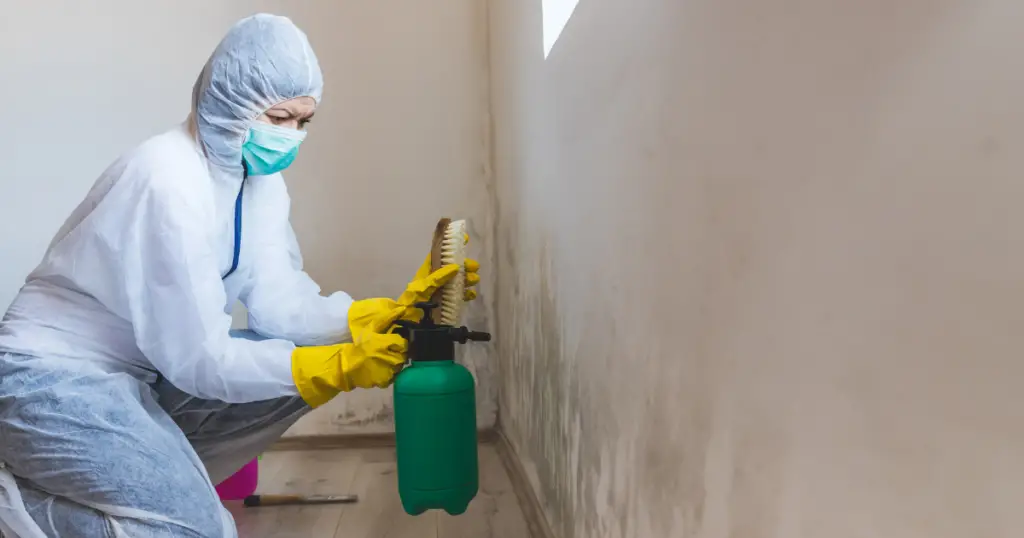
How to safely remove mold
If the mold test results confirm a problem, you will need to take steps to remove it safely. It is not advisable to attempt removal on your own as this can cause the spores to spread further and increase the risk of health problems. It is best to hire a professional remediation company with experience in removing mold effectively and safely. Read on to learn more about remediating a mold infestation from your home.
First, fix the conditions that lead to growth
The first step to removing mold is fixing whatever factors lead to a favorable growing environment. This often means fixing any water leaks that are present, improving ventilation, and/or using a dehumidifier.
Contain the mold environment
Once the conditions for growth have been addressed, you will need to contain the mold to prevent it from spreading further. This can be done by sealing off affected areas with plastic sheeting.
Some Surfaces and materials can’t be fixed
Many porous surfaces, such as wood, drywall, and carpeting, can be severely damaged by mold. If the infestation is too severe for cleaning or remediating, these materials may need to be removed and replaced.
Access the areas that mold is growing
If you believe there is mold growing in the wall, then you will need to access all the mold inside your walls directly. You will need to remove sections of the wall to get to the base framing and studs. On Exterior walls, you will often have insulation that will need to be removed and discarded.
Asses the conditions
Once you have access to the mold, assess the damage and extent of the infestation. You might need a professional company to determine the damages, especially if there appears to be structural damage.
There can also be damage to wiring, plumbing, or even casings that need to be replaced.
Clean and Remove the Mold
Once you have determined there are no structural problems and you have contained the area where you will be doing the mold remediation, the cleaning can begin. You can use a special mold cleaning solution to remove the mold. Some solutions are safer for the environment, but all require protective equipment such as gloves, respirators, and eye protection.
The objective of this stage is to remove as much mold as possible physically. This requires penetration into porous material. For wood framing, you can use light sanding or Peroxide based chemical penetrants.
You can use a HEPA-rated vacuum to help contain the loose mold material and wipes for more stuck-on mold damage.
Make sure you get rid of all materials used in the cleaning process. Replace Hepa filters on the vacuum.
Disinfect the affected Areas to kill mold
Once the areas have been cleaned, you need to disinfect them to kill any remaining mold spores. This is an essential step as it can help avoid future infestations.
You can use a commercial-grade disinfectant that is EPA-registered for mold in all affected areas. Make sure that you follow all instructions on the label of the product and wear protective gear when using the disinfectants.
Replace Affected Materials
Once the cleaning and disinfecting are complete, you will need to assess any materials in the affected area that need to be replaced. This includes insulation, drywall, wood framing, carpets, and other new insulation. You will need to install the drywall and mud, sand, and paint to match.
When to call a professional
It is a good idea to call a professional whenever you have elevated moisture levels and mold of mildew growth. A professional can assess the damage and help you create a plan to remove and remediate mold. They can also give you advice on how to prevent mold infestations.
Mold remediation is not something that should be taken lightly. It requires proper planning, protective gear, and tools to do the job correctly without second-order damage.
How to prevent future mold growth
To prevent future mold growth, you need to reduce moisture levels in your home. This includes using exhaust fans when cooking and showering, ensuring that all water leaks are fixed promptly, and reducing humidity levels below 50%.
Mold is a serious issue, but with the proper precautions and techniques, it can be remedied quickly and safely.
Frequent Inspection
Spend extra time inspecting areas in your home to make sure everything is in tip-top condition. Make sure there are no new water stains. Check for any discoloration or dampness in areas. And be on the lookout for any musty smell, as these can indicate hidden mold growth.
Perform necessary maintenance
The saying an ounce of maintenance is worth a pound of cure applies here. Regular maintenance and cleaning can help reduce the chance of mold growing in your home. Make sure you regularly clean out gutters, check for any blocked or clogged drains, inspect roofs for missing shingles, and look for any water stains on ceilings or walls.
Have your air conditioning system checked and maintained by professionals.
[/et_pb_text][/et_pb_column][/et_pb_row][/et_pb_section]


